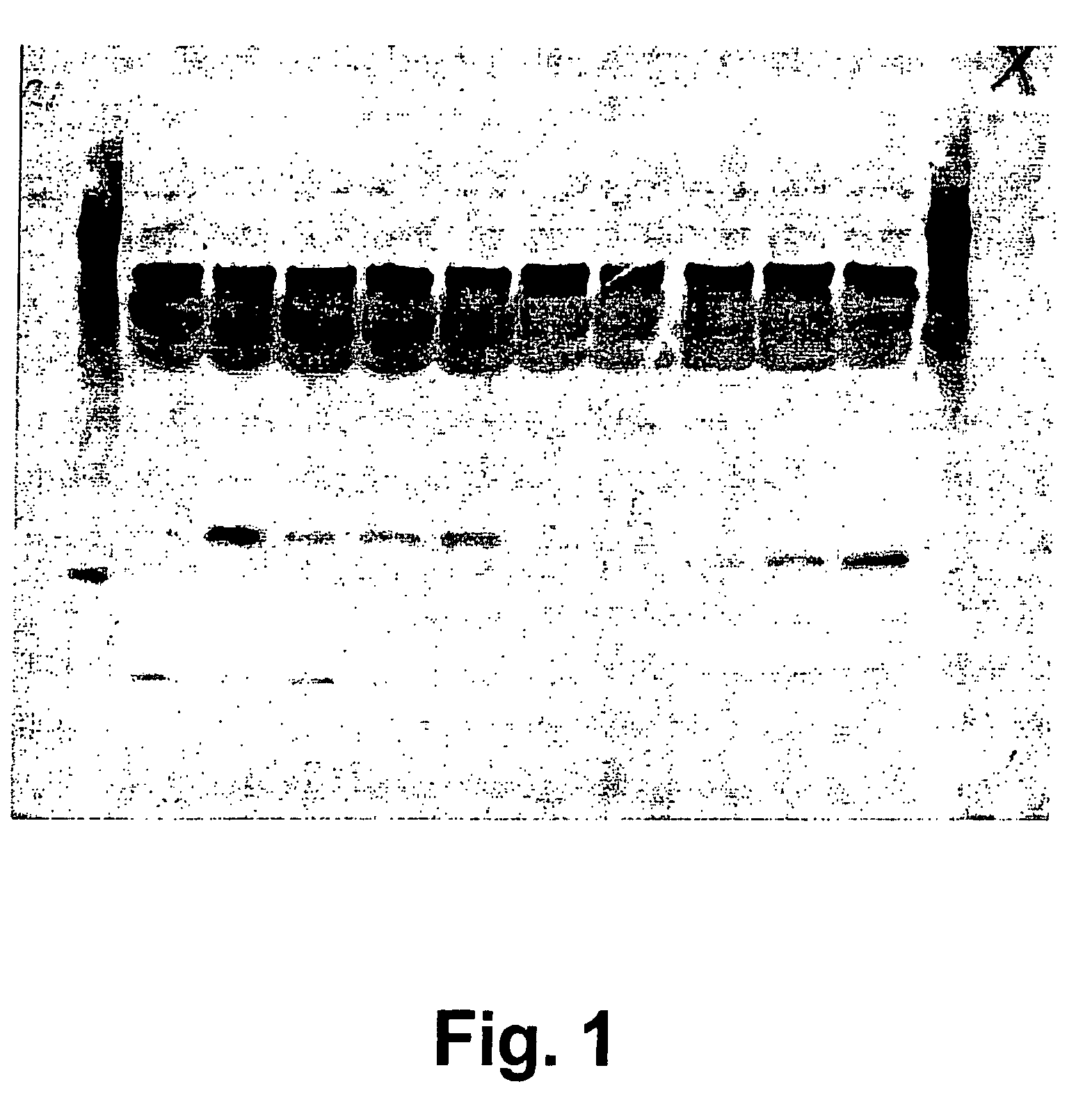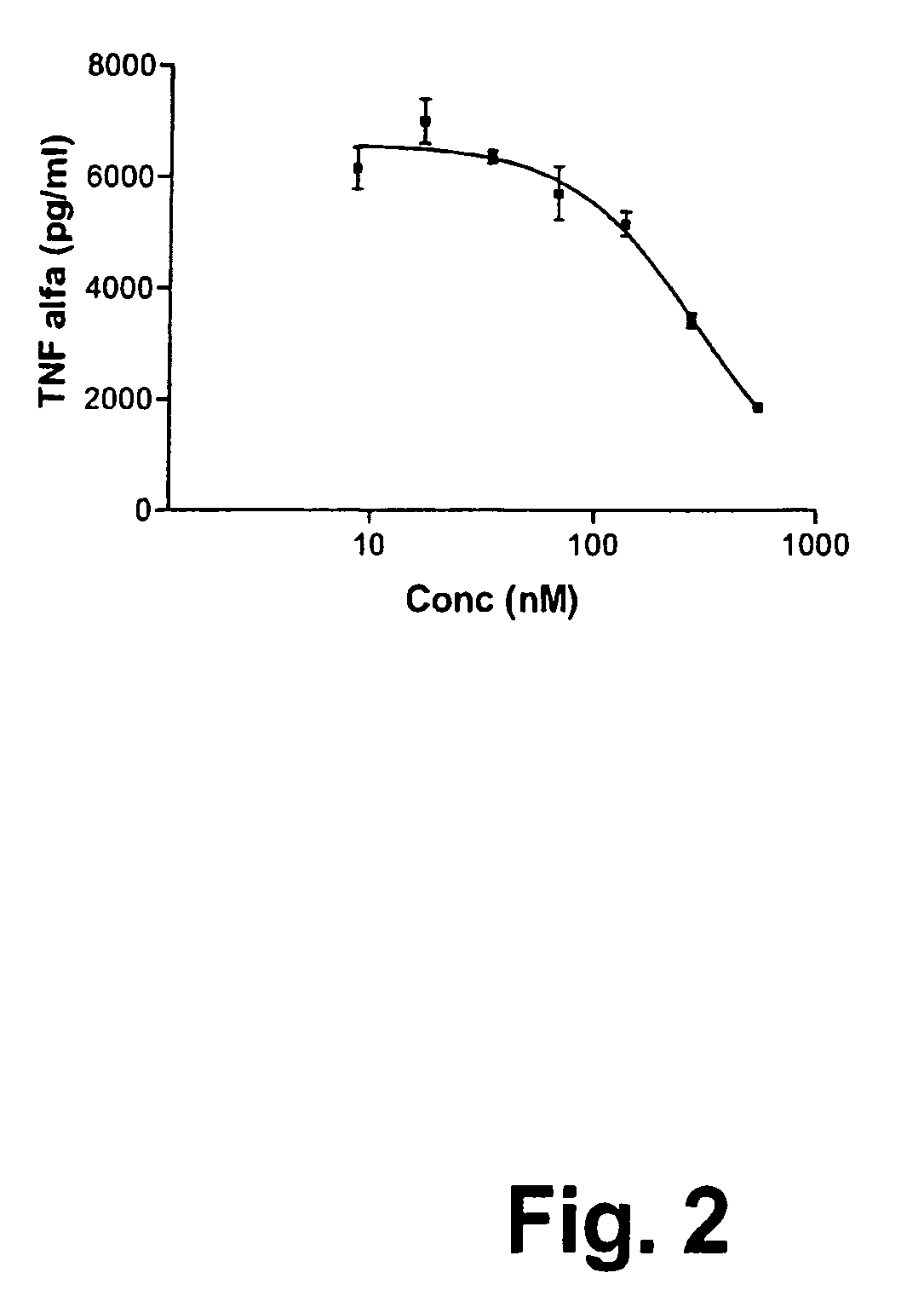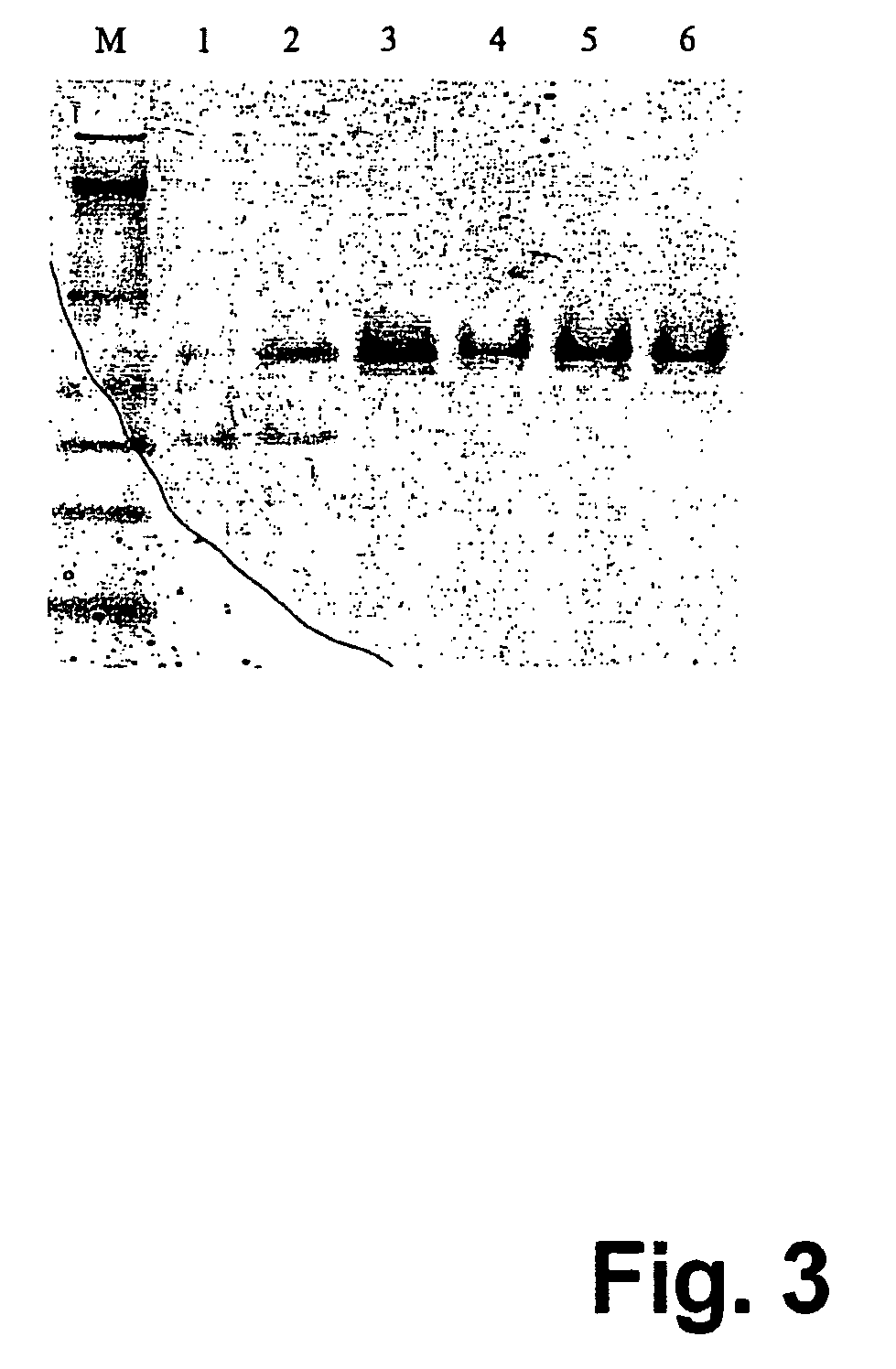Adiponectin fragments and conjugates
a technology of adiponectin and fragments, which is applied in the field of new conjugates comprising adiponectin polypeptides, can solve the problems of not being able to show any effect on insulin-reduced glucose output in hepatocytes, and achieve insulin-reduced glucose output, insulin-reduced glucose output, and insulin-reduced glucose output.
- Summary
- Abstract
- Description
- Claims
- Application Information
AI Technical Summary
Benefits of technology
Problems solved by technology
Method used
Image
Examples
example 1
Expression / Secretion of apM1(100-244) in CHOK1 Cells
[0751] In order to get the globular domain of human adiponectin (apM1), preceded by the last 8 amino acids of the collagenous region, secreted from CHOK1 cells the following cDNA is constructed: In brief, by using a 5′ primer (PBR 196; 5′-CGCGGATCCACCATGCTGTTGCTGGGAGCTGTTCTAC TGCTATTAGCTCTGCCCGGTCATGACGGCAGGAAAGGAGAACCTGGAGAA-3′), encoding the signal peptide of apM1(M1-D17) and 8 amino acids of the collagenous region (G99-E106), together with a 3′ primer (PBR 189; 5′-ATATATCCCAAGCT17CAGTTGGTGTCATGGTAGA-3′) in a PCR reaction containing QUICK-Clone cDNA (Human fat cell derived; # 7128-1, Clontech, USA) as template, a cDNA fragment encoding the signal peptide of apM1(M1-D17), the nine last amino acids of the collagenous region (G99-G107) followed by the entire globular domain (A108-N244) is isolated. The SignalP World Wide Web server (http: / / www.cbs.dtu.dklservices / SignalP / ) predicts the presence and location of signal peptide cleav...
example 2
Expression / Secretion of apM l (82-244) in CHOK1 Cells
[0754] In order to get the globular domain of human adiponectin (apM1), preceded by the last 26 amino acids of the collagenous region, secreted from CHOK1 cells the following cDNA is constructed: In brief, by using a 5′ primer (PBR 195; 5′-CGCGGATCCACCATGCTGTTGCTGGGAGCTGTTCTAC TGCTATTAGCTCTGCCCGGTCATGACGGTGAAACCGGAGTACCCGGGGCT-3′), encoding the signal peptide of apM1(M1-D17) and 8 amino acids of the collagenous region (G81-A88), together with a 3′ primer (PBR 189; 5′-ATATATCCCAAGCT TTCAGTTGGTGTCATGGTAGA-3′) in a PCR reaction containing QUICK-Clone cDNA (Human fat cell derived; # 7128-1, Clontech, USA) as template, a cDNA fragment encoding the signal peptide of apM1(M1-D17), the 27 last amino acids of the collagenous region (G81-G107) followed by the entire globular domain (A108-N244) is isolated. The SignalP World Wide Web server (http: / / www.cbs.dtu.dk / services / Si-nalP / ) predicts the presence and location of signal peptide cleav...
example 3
Expression / Secretion of apM1 (58-244) in CHOK1 Cells
[0757] In order to get the globular domain of human adiponectin (apM1), preceded by the last 50 amino acids of the collagenous region, secreted from CHOK1 cells the following cDNA is constructed: In brief, by using a 5′ primer (PBR 203; 5′-CGCGGATCCACCATGCTGTTGCTGGGAGCTGTTCTACTGCTATTAGCTCTGC CCGGTCATGACGGCAGAGATGGCACCCCTGGTGAG-3′), encoding the signal peptide of apM1 (M1-D17) and 8 amino acids of the collagenous region (G57-E64), together with a 3′ primer (PBR189; 5′-ATATATCCCAAGCT=CAGTTGGTGTCATGGTAGA-3′) in a PCR reaction containing QUICK-Clone cDNA (Human fat cell derived; # 7128-1, Clontech, USA) as template, a cDNA fragment encoding the signal peptide of apm1(M1-D17), the 51 last amino acids of the collagenous region (G57-G107) followed by the entire globular domain (A108-N244) is isolated. The SignalP World Wide Web server (http: / / www.cbs.dtu.dk / services / SignalPo) predicts the presence and location of signal peptide cleavage...
PUM
| Property | Measurement | Unit |
|---|---|---|
| molecular weight | aaaaa | aaaaa |
| molecular weight | aaaaa | aaaaa |
| molecular weight | aaaaa | aaaaa |
Abstract
Description
Claims
Application Information
 Login to View More
Login to View More - R&D
- Intellectual Property
- Life Sciences
- Materials
- Tech Scout
- Unparalleled Data Quality
- Higher Quality Content
- 60% Fewer Hallucinations
Browse by: Latest US Patents, China's latest patents, Technical Efficacy Thesaurus, Application Domain, Technology Topic, Popular Technical Reports.
© 2025 PatSnap. All rights reserved.Legal|Privacy policy|Modern Slavery Act Transparency Statement|Sitemap|About US| Contact US: help@patsnap.com



